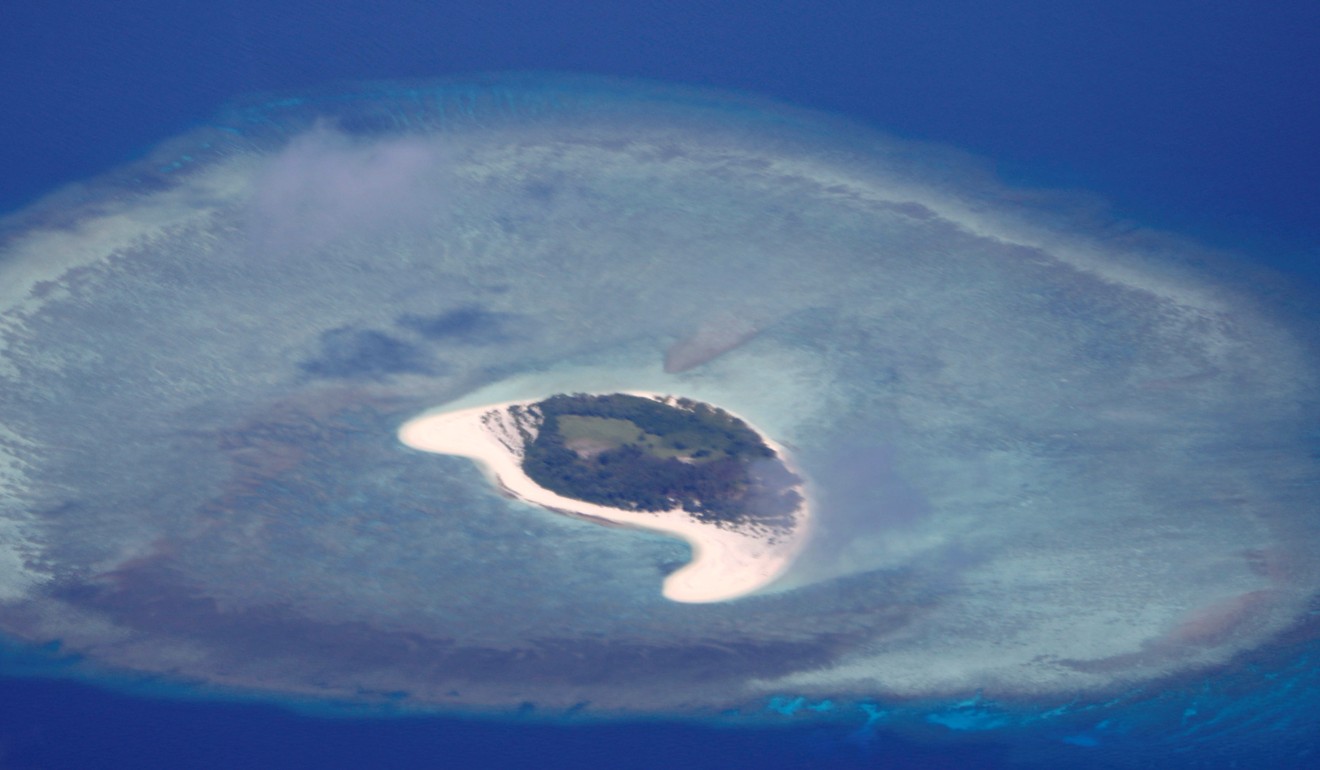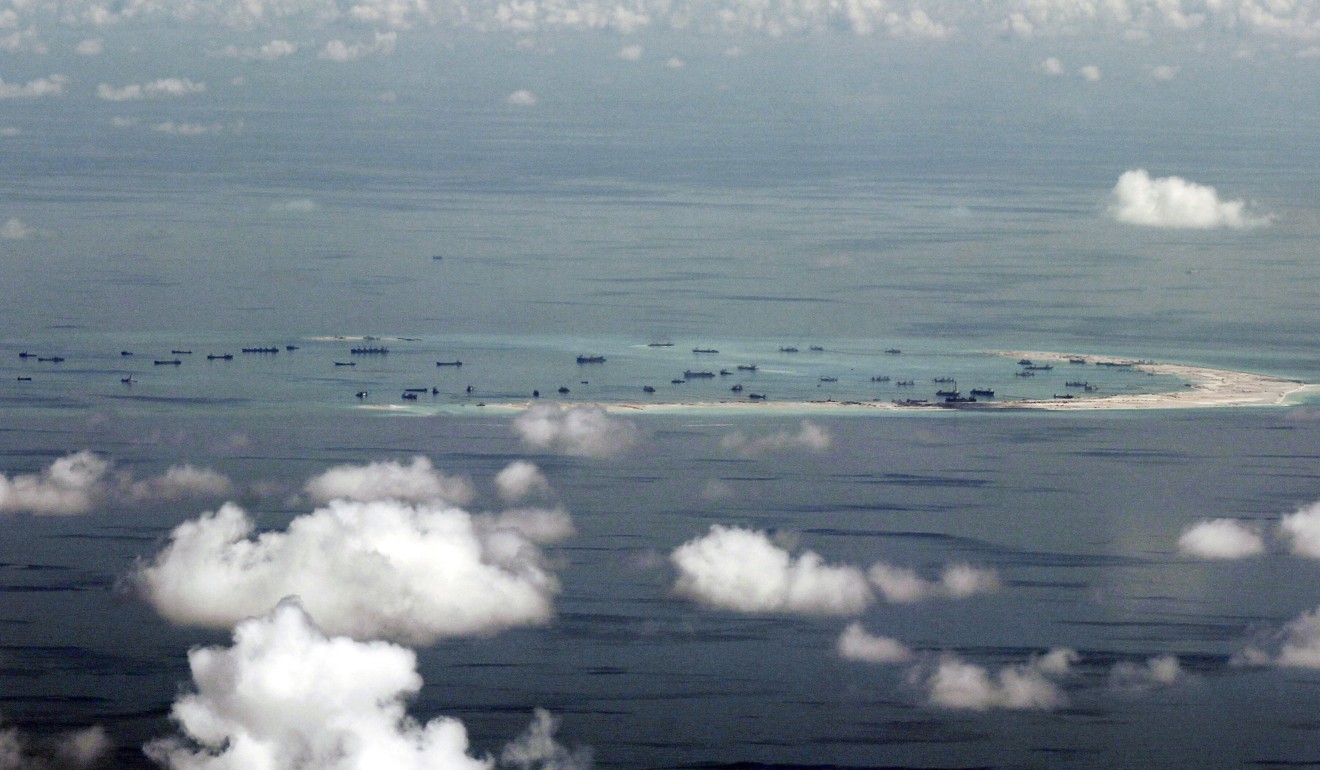US-CHINA TENSIONS: IS WAR THE ENDGAME IN THE SOUTH CHINA SEA?
A close encounter between a Chinese destroyer and the USS Decatur may have been an attempt by Beijing to keep tensions from crossing into an outright armed confrontation for which neither side is ready
These developments can be seen in the broader context of an increasingly acrimonious relationship between the two powers, not least over the ongoing US-China trade row. But as far the South China Sea issues are concerned, the Sino-US divergences and political-military friction have long preceded the trade disagreements. In response to Beijing having reneged on its 2015 promise not to militarise the disputed waters, the PLA Navy was disinvited from this year’s multinational Rim of the Pacific exercise hosted in Hawaii. This latest Chinese action in the South China Sea could have been meant as a tit-for-tat move by Beijing to express displeasure, yet it may also be an attempt to keep tensions from going past boiling point and crossing into outright armed confrontation. Neither power is ready for such an eventuality. The political and economic repercussions are too colossal as even a thought to entertain.
For one, the South China Sea remains an international medium through which the global community at large enjoys freedom of passage by sea or air. Thus far, there has been no attempt by any party to impede civilian passage. That would amount to an act of aggression on international economic well-being, since an estimated one-third of the world’s shipping passes through the sea.
This is, however, not the same for military passage. Beijing has challenged foreign military aircraft flying close to its garrisoned South China Sea features – much as, in this latest case, its destroyer’s manoeuvres challenged those of the USS Decatur.
 An uninhabited Spratly island in the disputed South China Sea. Photo: Reuters
An uninhabited Spratly island in the disputed South China Sea. Photo: Reuters
In China’s case, backing down means conceding its claims to the South China Sea and long-standing call against foreign interference in the disputes. This would carry unimaginable political costs for the ruling Communist Party and for President Xi Jinping’s personal prestige and legitimacy. For the US, backing down would undermine what it has been fighting for: freedom of passage for civilian and military vessels alike, and more broadly, it would cast in doubt its security commitment to the region. That has colossal implications on its credibility as a global superpower.
Hence, both China and the US will most plausibly not roll back on their respective activities. The latter will continue to conduct “show of flag” presence operations, including warship manoeuvres and military overflights such as a recent one by B-52 strategic bombers. Beijing will continue to militarise the sea, including staging frequent air, naval and amphibious exercises. It will continue to couch all such moves as “self-defensive” responses to US military activities and for that matter, those of other external powers such as Australia, France, India, Japan, and Britain, which have also recently ramped up their South China Sea military presence.
THERE IS NO STOPPING CHINESE WARSHIPS AND FIGHTER JETS FROM MORE MUSCULAR FORMS OF SOVEREIGNTY ASSERTION
The question then will be whether war over the South China Sea becomes the endgame? The South China Sea tussle is as much a contest of morality as that of freedom of passage. Nobody, China nor the US nor any Asean (Association of Southeast Asian Nations) claimant, seriously wants to become the first to fire a shot and receive the dubious global honour of being seen as a pariah state for endangering regional peace and stability.
The “show of flag” and “show of force” moves and counter-moves by China and the US (and its allies and partners included at times) will continue, but be assiduously maintained under the threshold of outright use of force.
 Chinese land reclamation on Mischief Reef in the Spratly Islands. Photo: AP
Chinese land reclamation on Mischief Reef in the Spratly Islands. Photo: AP
At the mildest, PLA Navy ships and planes will continue to shadow foreign military assets traversing the area. The verbal challenges issued by Chinese garrisons in the Spratlys will continue, backed up by a growing plethora of military capabilities such as missile batteries and, possibly, rotational deployment of fighter jets and other warplanes. It may be difficult to imagine an exclusion or air defence identification zone over the South China Sea that may trigger regional repercussions, including the alienation of at least some Asean member states. But there is no stopping Chinese warships and fighter jets from more muscular forms of sovereignty assertion, such as in the case of the USS Decatur.
The risk of premeditated armed conflict in the South China Sea can be ameliorated by existing regional security platforms, such as the Asean Defence Ministers Meeting (ADMM) Plus, which will convene this month in Singapore. Such events will serve as a veritable high-level channel for policymakers to air concerns and promote dialogue. While talks carry on as a habit, the incidence of accidental or inadvertent clashes may potentially increase with the growing density of forces operating within confined maritime and air spaces.
Amid the enduring deficit of strategic trust, it is still possible to promote navigational safety and crisis stability through the use of confidence-building mechanisms, such as the Code for Unplanned Encounters at Sea promulgated by 21 navies during the Western Pacific Naval Symposium in 2014. It will be fitting, given the present evolving circumstances including unceasing submarine proliferation and a possible return of aerial close-proximity encounters, to not only solidly implement the code but extend this mechanism to the undersea and aerial dimensions.
The South China Sea endgame does not necessarily have to devolve into conflict, but rather, fester on as an avenue of tit-for-tat military moves and countermoves maintained under that threshold. It is delusional to expect strategic distrust to dissipate overnight. But an unfortunate mishap arising from inadvertent or accidental clashes between rival forces can indeed emerge quickly and without prior warning. Confidence-building mechanisms, not just at the strategic but operational levels, and professionalism of the service people on the ground, would be the bulwark against such dire eventualities. ■
Humanity has lived in relative peace since the end of World War II.
This period, dubbed the 'long peace', has seen fewer large-scale wars and battlefield deaths compared with the past two centuries.
But is this a long-term trend or could we be on the brink of a massive war?
According to the study conflicts as large as the WII occur on average every 205 years - so it will be another 100 years before we know for sure whether the 'long peace' is here to stay.
Since records began on inter-state war data in 1823, there have been 95 total wars. Thirty four of them are considered large. Between 1914 and 1945 - a period caleld the 'Great Violence' - a war broke out every 2.7 years
The long peace began after WWII and has held for more than 70 years.
Political scientists argue that various 20th century developments reduced the risk of global conflicts during this period.
These include the spread of democracy, increased economic interdependence, and the threat of nuclear war. To find out if the long peace is a significant and long-term change, Dr Aaron Clauset from the University of Colorado at Boulder looked at the frequency and size of conflicts between 1823 and 2003.
He told MailOnline: 'The goal of the study was to assess whether or not the pattern of relatively few large wars since the end of World War II can plausibly be interpreted as a trend, and thus likely to hold in the future.'
It was in 1823 when records on inter-state conflicts were first kept as part of the 'Correlates of War Project'.
The blitz during WWII cost many people their life and occurred during the 'great violence' between 1914 and 1945. This was the most deadly time period in human history
All the wars were broken down into four different categories based on how many people died and how costly it was. This graph shows the total amount of wars over time. Large wars are in red. The dashed lines represent the end of WWII and the end of the Cold War
In the study, Dr Clauset looked at how common wars were and how many people died.
Over the 181 year period, there were 95 recorded wars which equaled one every 1.91 years on average, according to the New Scientist.
Dr Clauset divided the period up into three sections.
In the first period, from 1823 to 1914, there was a steady stream of large wars, including the Crimean War and the Boer War.
During this time, 19 large battles broke out at an average of one every 6.2 years.
When 1914 came round, this all changed with the dawn of the 'great violence'.
Between the start of The Great War and the end of WWII the world saw 10 large wars at an average of every 2.7 years.
This resulted in the most violent and widespread loss of human life in recorded history.
ARE WE HEADING FOR WORLD WAR 3?
Since 1823 to 2003, a 181-year period, there have been 95 recorded wars between different countries: one every 1.91 years on average.
Larger wars, those with the most deaths, were far less common.
World War One lasted between 1914 and 1918 and World War Two spanned from 1939 to 1945.
The Great War (WWI) cost an estimated 21 million people their lives.
The Second World War lasted longer than the first and killed ab estimates 85 million people - more than the entire population of Germany in 2017.
The time between, and including, these wars has been dubbed the 'great violence'.
Before then there was a total of 19 large wars, one every 6.2 years dating back to 1823.
After World War Two, the 'long peace' began which has spanned from 1945 through to present day.
Only five major inter-state wars have taken place since 1945.
Major conflicts now average once every 12.8 years.
According to research, for the statistical pattern to be significantly different there would have to be a 205 year gap before there is another war as large as WWII.
Which leaves between 100 and 150 years before we will know if this period of peace is a statistical blip or a new conflict-free era. 
Dr Clauset predicted how long the period of peace would have to last to make sure it is not just a statistical blip. The black dashed line represents the time where the data set finished at 2003 and a linear extrapolation of likely amount of wars in the future
The 'Great Violence' spanned nearly 40 years and followed a time of consistent if not extreme wars. The Great War changed that and 10 large wars broke out at an average of every 2.7 years after 1914
With the end of the Second World War, a relative calm settled on the world.
'Since 1945, there have been relatively few large interstate wars. This pattern, sometimes called the long peace, is highly controversial,' said Dr Clauset.
At an average of 12.8 years apart, this is, by comparison to the 'great violence', a tranquil time.
Dubbed by some experts as the 'long peace', the research focused on how long we can reasonably expect this to last.
The worldwide aggression of countries between 1914 and 1945 is, at least statistically, balanced out by the 'long peace' that has endured since.
Following the Second World War, the 'long peace' began which points towards there only being five large wars (one every 12.8 years) between 1945 and 2003
The analysis showed here that as the amount of deaths in a war increased, the amount of wars with that amount of deaths diminished. The more deadly wars were very rare, with very few reaching the highest levels of death
The analysis of all the wars since 1823 shows that the longer the period of time between wars the shorter the wars tended to be
Which means the rate of wars over the last 100 years is roughly the same as it was during the 19th century.
Clauset estimates from the data that conflicts as large as the second world war would occur on average every 205 years.
Dr Clauset told MailOnline: 'The risk of a large war in the future may thus be higher than currently believed, and it's crucial that we continue to promote peace and mitigate conflict in the future.'
The conclusion that we are living in a time of peace is only true for wars between countries, not civil disputes or warring with a rogue faction not considered a 'state'.
Dr Clauset points out that the research data set only goes up to 2003 and therefore several wars of recent memory are not included in the research.





No comments:
Post a Comment